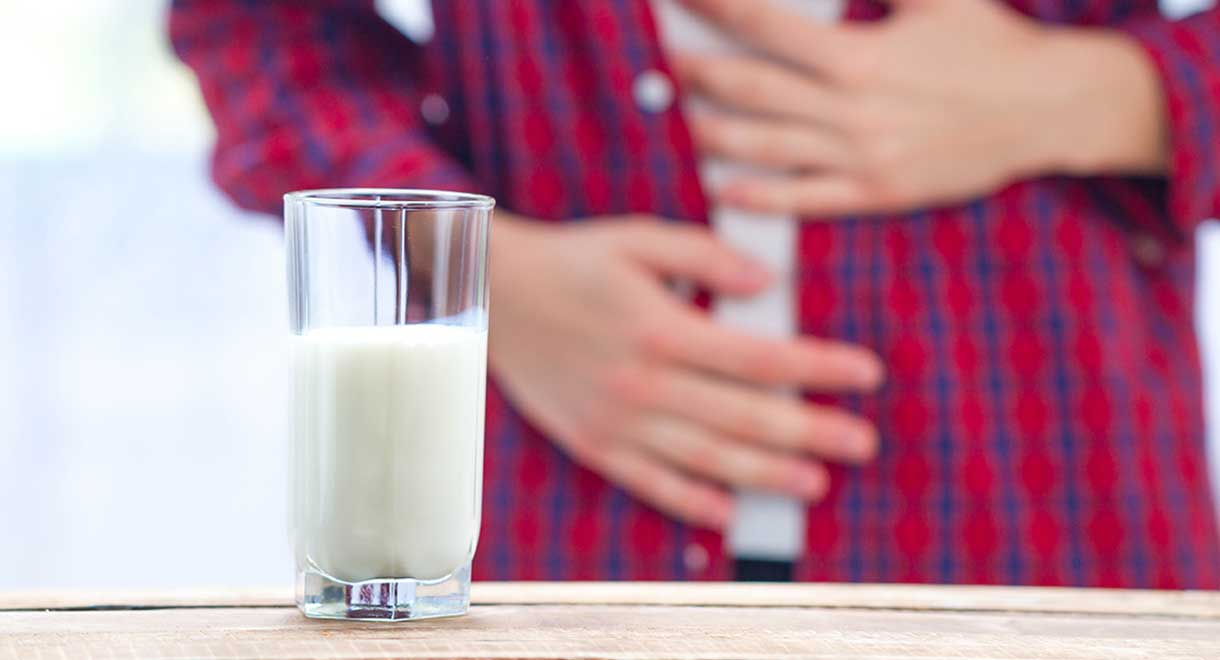Lactose Intolerance
Milk and other dairy products contain a type of sugar called lactose. An enzyme called lactase is produced in the digestive tract, which digests lactose into its building blocks (glucose and galactose). People who cannot produce the enzyme lactase are said to have lactose intolerance.
Some cultural groups are much more prone to lactose intolerance than others. The condition is very common among Asians, Africans, Australian aborigines and people in the Middle East. Lactose intolerance is rare among Caucasians. The enzyme lactase is produced on the lining of the digestive tract; therefore conditions that inflame the gut lining, such as gastroenteritis and inflammatory bowel disease can produce temporary lactose intolerance. Many people are not able to digest milk after a bout of food poisoning for instance. This corrects itself once the lining of the digestive tract heals. Having a parasitic infection or being iron deficient can also temporarily impair the digestion of lactose.
Permanent lactose intolerance is congenital, meaning you are born with it. A high percentage of people are also gluten intolerant.
Symptoms
- Flatulence
- Diarrhea
- Abdominal pain
- Abdominal bloating
Most people with lactose intolerance have a particular threshold level; that is they can consume a minimal amount of lactose and not experience any symptoms. If they consume a lot of lactose, they experience uncomfortable symptoms.
Diagnosis of lactose intolerance
- Elimination diet: This involves removing all lactose containing foods from your diet for a week or more. If symptoms disappear while not consuming lactose, and reappear when lactose is reintroduced into the diet, a person is thought to be lactose intolerant.
- Hydrogen breath test: This checks the amount of hydrogen present in exhaled air. People with lactose intolerance exhale larger amounts of hydrogen.
Where is lactose found?
Apart from dairy products such as milk, cheese, yogurt and ice cream, lactose is commonly hidden in the following foods:
- Cakes and biscuits (if they contain milk)
- Bread (if it contains milk solids)
- Some breakfast cereals
- Custard
- Milk chocolate
- Pancakes
- Creamy soups and creamy sauces
If you want to avoid lactose, make sure the food you eat does not contain the following ingredients: milk solids, milk sugar or whey.
Treatment
The best way to avoid the symptoms is to avoid eating lactose containing foods. Cheese, yogurt and whey protein contain far less lactose than milk, and many people with lactose intolerance are able to consume them. Tablets and liquids containing the enzyme lactase can be purchased and taken at the same time as consuming lactose, to help the body digest it.
It is not necessary to consume dairy products to obtain sufficient calcium in the diet. Good non-dairy sources of calcium include the following:
- Tahini (sesame seed paste)
- Canned fish with edible bones (salmon, sardines)
- Bone broth/home made stock
- Tofu (calcium set)
- Bok choy
- Broccoli
- Almonds
- Figs
- Seaweed
The above statements have not been evaluated by the FDA and are not intended to diagnose, treat or cure any disease.


Leave A Comment